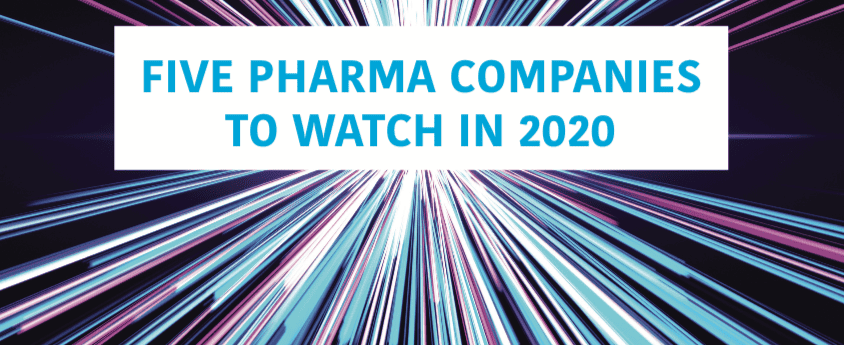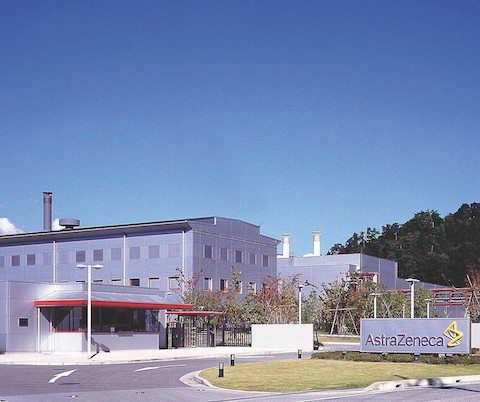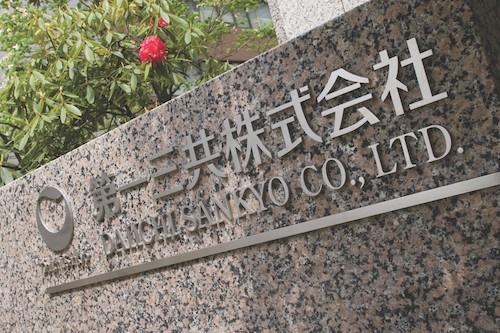
1. AbbVie

Mega-mergers are back in vogue in pharma, and one of the biggest agreed last year was AbbVie’s $63bn buyout of Allergan. The deal was announced in June 2019 and took months to go through the antitrust regulatory process, but according to AbbVie – which agreed a massive $30bn bond issue to help finance the deal – it is due to close early this year.
Big deals always bring integration challenges and internal disruption – in fact some research suggests only 40-60% of mega-mergers actually succeed in meeting the strategic objectives – so the combined company will have to hit the ground running in 2020.
There’s also some urgency for the transaction to go quickly and smoothly as AbbVie prepares for the loss of patent protection for $20bn immunology drug Humira (adalimumab) in the US in 2023, and is starting to feel the effects of biosimilar competition to the brand in Europe. At the moment Humira accounts for nearly two-thirds of AbbVie’s total sales.
AbbVie chief executive Rick Gonzalez has been forced to defend the merits of the merger, which critics suggest is saddling the company with debt and adding little of note to the pipeline. He argues, however, that layering in products like Allergan’s blockbuster wrinkle and migraine treatment Botox will improve near-term cashflow and help fund the roll-out of a new wave of products intended to reduce its reliance on Humira, starting in 2020.
“Combined, we will generate significant earnings and cash flow to enhance our innovative R&D platform, support a strong and growing dividend and rapidly pay down debt,” said Gonzalez late last year.
Botox is facing tougher competition in the market from new migraine drugs as well as rivals in its medical aesthetics indications. The latter is still low level, however, and biosimilars to Botox are thought to be some years off the market.
AbbVie needs its new products to deliver quickly, and that includes recently approved JAK inhibitor Rinvoq (upadacitinib) for arthritis and psoriasis therapy Skyrizi (risankizumab) – both tipped as possible future blockbusters despite launching into competitive markets. Their performance in 2020, along with other new launches like Orilissa (elagolix) for endometriosis pain will be a signpost as to whether they can fulfil that potential.
2. AstraZeneca

AstraZeneca is included in our list on the back of its resurgent revenues, which according to some analysts will allow it
to outperform all its big pharma peers in 2020.
It’s been an incredible turnaround for the company under CEO Pascal Soriot from a few short years ago, when its future as an independent company was jeopardised by a takeover bid from Pfizer.
AZ’s new growth phase comes after a six-year sales slump thanks to patent expiries, and has arrived on the back of a clutch of newer drugs that are either already $1bn-plus blockbusters, or heading in that direction. All told, new launches could add $13bn in revenues over the next five years, according to analysts at Liberum.
Cancer therapies Tagrisso (osimertinib) – now AZ’s top-selling drug – Lynparza (olaparib) and Imfinzi (durvalumab) are already gathering momentum, as they rack up additional indications that extend their use and there is more to come next year. That includes potential new approvals for PARP inhibitor Lynparza in prostate and pancreatic cancer to extend its existing use in ovarian and breast cancer.
Tagrisso’s growth as it moves earlier in the treatment pathway for EGFR-positive non-small lung cancer (NSCLC) and launches in new markets like China, plus possible label extensions for checkpoint inhibitor Imfinzi such as the POSEIDON trial in first-line NSCLC, are key newsflow events this year.
AZ’s recovery has depended greatly on its cancer franchise, but it has some other big developments coming up in other therapeutic areas as well. Diabetes therapy Farxiga (dapagliflozin) has the potential to go where no other drug in the SGLT2 inhibitor class has gone before as it secures approval for heart failure in both diabetic and non-diabetic patients this year. There are also potential approvals for anifrolumab in lupus and PT010 in chronic obstructive pulmonary disease (COPD).
The company’s biggest play last year was licensing Daiichi Sankyo’s cancer candidate trastuzumab deruxtecan for an eyewatering
$6.9bn. That’s a story in itself however – read on for more on that.
3. Bristol-Myers Squibb

Like AbbVie, Bristol-Myers Squibb is facing the challenge of integration after its own mega-merger with Celgene, which concluded in November 2019 after nearly a year of wrangling with the antitrust authorities.
BMS had to divest Celgene’s $1.6bn psoriasis drug Otezla (apremilast) to get the $74bn deal through, but it found a willing buyer in Amgen.The merger sparked a decline in BMS’ share price when it was announced as well as resistance from activist shareholders,
but the stock has steadily risen since as investors warmed to the deal.
BMS will become the fourth largest pharma firm by sales – behind Pfizer, Novartis and Roche – and the addition of new Celgene brands like blood cancer therapies Revlimid (lenalidomide) and Pomalyst (pomalidomide) will boost cash flow.
The merger was completed shortly after BMS reported the first decline in quarterly sales of its immuno-oncology blockbuster Opdivo (nivolumab) since its launch five years ago, and 2020 is viewed as a pivotal year for the company.
Opdivo is being squeezed out of the market by Merck & Co/ MSD’s Keytruda (pembrolizumab), which dominates the lucrative first-line NSCLC market and is cutting into BMS’ share of the second-line market as well. BMS has warned its drug will be under pressure next year, but says it has a plan to fight back – predicated on new clinical data and regulatory decisions in 2020.
Trial results for Opdivo alongside CTLA4 checkpoint inhibitor Yervoy (ipilimumab) are one key element of that, particularly better long-term survival than the Keytruda/chemotherapy combination which is driving the growth of Merck’s drug. Other important read-outs in first-line kidney, oesophageal and gastric cancer are also due this year, as well as adjuvant (post-surgery) trial results later this year and in 2021.
Elsewhere, BMS will need new Celgene prospects like selective JAK2 inhibitor Inrebic (fedratinib) – the first new myelofibrosis therapy in a decade – as well as other new drug candidates like multiple sclerosis treatment ozanimod and myelodysplastic syndromes/beta thalassaemia candidate luspatercept – to deliver on their potential.
4. Daiichi Sankyo

The fourth company on our list – Daiichi Sankyo – has something in common with the first. Our decision to include the Japanese drugmaker comes on the back of trastuzumab deruxtecan or DS-8201, a candidate tipped to become a practice-changing treatment for breast cancer patients with low levels of the HER2 protein, as well as other cancer types.
The HER2-targeting antibody-drug conjugate (ADC) combines the HER2-targeting of Roche’s blockbuster breast cancer therapy Herceptin (trastuzumab) with a cell-killing chemotherapy component designed to improve its ability to kill breast cancer cells.
Daiichi’s partner AZ paid a massive $1.35bn upfront for rights to the drug, and after being given a priority review by the FDA as a treatment for patients with advanced or refractory HER2-positive metastatic breast cancer, DS-8201 was recently approved by the FDA with the brand name Enhertu for the treatment of adult patients with unresectable or metastatic HER2 positive breast cancer who have received two or more prior anti-HER2-based regimens in the metastatic setting.
Roche already has a somewhat underperforming trastuzumab-based ADC in the form of Kadcyla (trastuzumab emtansine) which made just over $1bn in the first nine months of last year from its use in patients who relapse after or don’t respond to Herceptin, so why the excitement about DS-8201?
In the DESTINY-Breast01 trial, the drug showed a 60% response rate in patients who had failed treatment with Kadcyla, but Daiichi and AZ intend to move it earlier in the treatment pathway in HER2-positive breast cancer as quickly as possible, challenging Roche’s duo of Herceptin and Perjeta (pertuzumab).
Moreover, they think there is scope to extend the use of the drug to breast cancer and other solid tumours in patients who express lower levels of the HER2 biomarker than would ordinarily warrant HER2-targeting therapy. If successful, that would dramatically increase the eligible patient population in breast cancer as well as potentially gastric, colorectal and lung cancers.
The key difference between DS-8201 and Kadcyla is that Daiichi’s drug has a more potent chemotherapy payload that also gets into cells more readily.
If those plans go well, estimates are that sales of DS-8201 could eclipse Kadcyla and enter multibillion-dollar territory – some analysts say as much as $12bn – at its peak. That would be a transformative launch for Daiichi, which reported a little under $9bn in group sales last year, and even at the lower end of forecasts would be a major new product launch for 2020.
DS-8201 is central to that effort, but it’s also hoping for strong support from other pipeline drugs like quizartinib for relapsed or refractory FLT3-positive acute myeloid leukaemia (AML) – knocked back by an FDA advisory committee in 2019 but still in development – and pexidartinib, which was recently approved for rare disease tenosynovial giant cell tumour (TGCT).
5. Johnson & Johnson

Johnson & Johnson’s inclusion in this list stems from one unfortunate and potentially damaging issue – or rather a series of them – that could come to a head this year.
We’re talking about the lawsuits J&J is facing claiming damages as a result of using its products, including opioid painkillers, Baby Powder talc and its schizophrenia drug Risperdal (risperidone), as well as hip replacement and vaginal mesh products in its medical device business.
All told, J&J is facing tens of thousands of lawsuits, a number of which could be settled in rulings expected over the course of this year. In the summer of 2019 it was ordered to pay Oklahoma $572m in penalties, although this was later reduced to $464m, after a court found it liable for contributing to an epidemic in opioid abuse and overdose-related deaths in the state.
The following month J&J agreed to a $20m settlement of similar allegations in Ohio, and there is a chance there could be a global settlement involving multiple drugmakers and distributors.
In October 2019 J&J was found liable for a whopping $8bn in damages in a lawsuit brought by a US man who claims he was not warned that taking Risperdal as a child could lead to breast growth, heard a Philadelphia court. After
a successful appeal on the grounds that the sum was a “disproportionate” award, the judge presiding over the Risperdal case reduced the damages amount to $6.8m.
Meanwhile, litigation over asbestos in talc continues, with wins and losses for the company in the last few months, with the stand-out verdict a $4.7bn damages award in Missouri in July 2019, which involved 22 plaintiffs who alleged using J&J talc caused them to develop ovarian cancer. Although the drugmaker appealed the decision, it was unsuccessful.
The company’s cause wasn’t helped by an FDA study which claimed to have found ‘sub-trace’ levels of asbestos in a Johnson’s Baby Powder product. It has had independent tests conducted on the same bottle and insists those found no asbestos.





